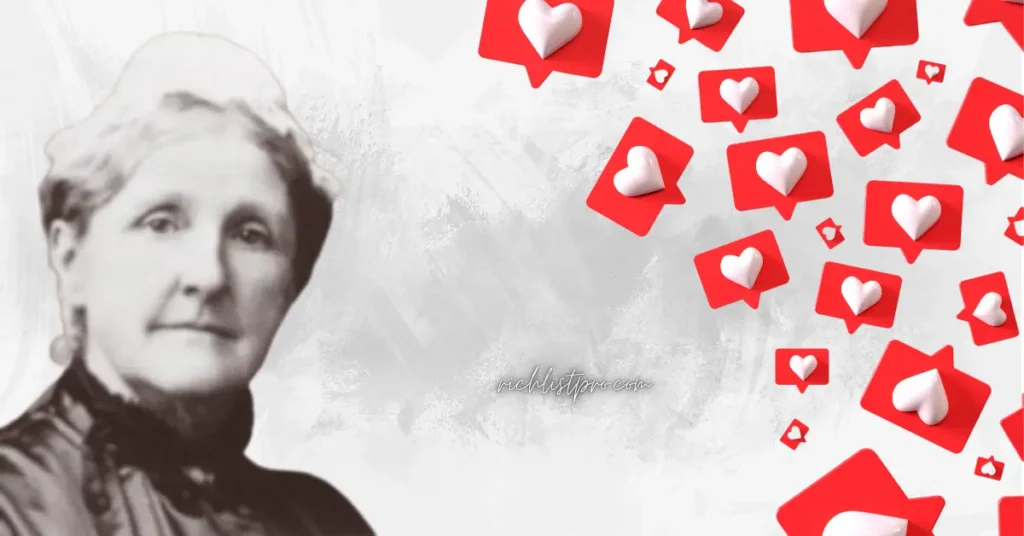When we think of the name Isaac Newton, words like “genius,” “gravity,” and “scientific revolution” instantly come to mind. But behind every great figure is a family tree filled with lesser-known lives—people who lived, loved, and shaped the background of history without ever stepping into the spotlight. One of these individuals is Hannah Smith Pilkington, Newton’s half-sister.
Despite her direct connection to one of the world’s most influential thinkers, Hannah’s story remains largely undocumented. This article aims to uncover the legacy of a woman’s history overlooked—not through scandal or silence, but simply because she wasn’t deemed “important enough” at the time. Let’s explore Hannah’s life, her connection to the Newton family, and why her story deserves space in the narrative of British history.
Early Life in 17th-Century Lincolnshire
Born in the quiet countryside of Lincolnshire, Hannah Smith Pilkington entered a world defined by tradition, hierarchy, and the strict roles women were expected to play. Life in the 1600s was far from easy, especially for girls. Education was rare for daughters unless they belonged to the aristocracy or scholarly families, and Hannah’s upbringing, though humble, placed her in a uniquely blended family.
The town of Colsterworth, where her famous half-brother Isaac Newton was born, shaped much of her early experience. With her mother, Hannah Ayscough, remarrying Barnabas Smith, a local clergyman, Hannah became part of a lineage tied deeply to the church and early British history. It was a life filled with domestic duty, faith, and the shadows of larger-than-life figures.
The Ayscough-Smith Connection: Ancestral Ties
Hannah’s roots are found in the union between Hannah Ayscough, Newton’s widowed mother, and Barnabas Smith, a man of the cloth. This marriage blended the Ayscough family, known for its respectable status, with the Smith family, who carried influence in religious circles. The result? A house where Newton’s half-siblings were raised under the guidance of a religious figure, while Newton himself was sent away to live with his maternal grandparents.
The Smith family history added depth to the Newton bloodline, offering a contrast between scientific brilliance and spiritual grounding. Although Isaac Newton’s early life was shaped far from this blended home, Hannah lived directly under the influence of their shared mother and her new husband. The Newton family background, rich with both scientific and theological influence, shaped not just one boy’s future—but a quieter, untold sister’s as well.
Half-Sister to Genius: Hannah and Isaac Newton
The term “half-sister to genius” feels poetic, yet it’s rooted in historical truth. Hannah Smith Pilkington was Isaac Newton’s half-sister, one of three children from Hannah Ayscough’s second marriage. While Newton pursued scientific discovery in Cambridge and beyond, Hannah lived a more conventional life, probably staying close to home.
We have little evidence of a deep bond between the two siblings, and there’s no known correspondence between Hannah and Isaac. However, the Newton family biography cannot be fully understood without her. She represents a quieter path—a life lived in Newton’s shadow, but vital to understanding the family structure and emotional backdrop that shaped his early years. In this way, Hannah’s presence adds contextual richness to Newton’s famously complex character.
Siblings & Smith Family Tree (with diagram)
To fully grasp Hannah Smith Pilkington’s place in history, we need to map out the Newton family tree—specifically the Smith-Ayscough branch. After the death of Isaac Newton’s father, his mother Hannah Ayscough married Reverend Barnabas Smith, a well-regarded clergyman. This second marriage resulted in three children: Hannah Smith (later Pilkington), Mary Smith, and Benjamin Smith.
Here’s a simple breakdown:
Isaac Newton’s Family Tree (Simplified)
1. Hannah Ayscough + Isaac Newton Sr. (1st Husband)
└── Isaac Newton (b. 1642)
2. Hannah Ayscough + Barnabas Smith (2nd Husband)
├── Hannah Smith (later Pilkington)
├── Mary Smith
└── Benjamin Smith
While Isaac Newton was raised by his maternal grandparents, the Smith siblings grew up in the minister’s household. This blended family dynamic likely created a divide—not just physically, but emotionally too. Hannah, being the eldest of the Smith children, may have carried responsibilities both at home and within the church community, shaping her into a strong, though historically silent, figure.
What’s fascinating is that none of these siblings—Hannah, Mary, or Benjamin—have prominent mentions in Newton’s personal writings. This absence has led many to overlook them entirely, but understanding them adds valuable context to Newton’s early environment and the web of people who were part of his formative years.
Life, Marriage, and the Pilkington Link
Though historic records about Hannah Smith Pilkington are scarce, her surname gives us an important clue—Pilkington was likely her married name. Marriage in 17th-century England was more than personal; it was a societal expectation, especially for daughters of clergymen. Hannah likely married into the Pilkington family, a surname associated with various landed and respected families in England at the time.
This connection suggests a life lived in relative stability. As a woman of religious upbringing, she would’ve been expected to manage a household, raise children, and possibly engage in community work tied to the local church. While she may not have written books or dabbled in science like her half-brother, her existence helped sustain the Newton-Smith family legacy in quieter ways.
What we do know is this: women like Hannah often had their voices muted by history—not because they did nothing, but because they lived in a time that didn’t think their contributions mattered. Today, we can change that by recognizing her role, however small it might seem in the grand narrative.
Women in the Shadows: Historical Erasure and Gender Roles

Hannah Smith Pilkington’s limited historical footprint is not an exception—it’s the rule. The 1600s were not kind to women when it came to historical documentation. Most British women in history were sidelined unless they were royalty, rebels, or mystics. As a result, stories of domestic women, even those connected to famous men, were rarely recorded in detail.
This pattern of historical erasure makes the search for Hannah’s life both fascinating and frustrating. Her identity as Newton’s half-sister was simply not deemed worthy of biographical detail. This lack of information speaks volumes about the roles women played—essential, but invisible.
By revisiting Hannah’s story, we begin to restore the narrative balance. We recognize that even those who weren’t scientists, writers, or leaders shaped the cultural and familial soil from which history’s great figures grew. Her silence is not emptiness—it’s an invitation to ask better questions.
Family Legacy and Descendants
One of the most intriguing unknowns is whether Hannah Smith Pilkington had children, and if so, where their lineage led. The Pilkington surname remains active in parts of England, and though there’s no confirmed genealogical record linking modern-day Pilkingtons to Hannah, it’s not out of the question.
If Hannah did have children, they would have carried a bloodline directly tied to Isaac Newton’s family tree—not through his own offspring (Newton never married or had children), but through their shared mother. This makes Hannah’s potential descendants unique bearers of both historical and intellectual heritage.
A full Newton family legacy can’t be told without asking: who came next? Tracing Hannah’s descendants could reveal new branches of a tree we’ve only ever seen from one side.
Read More >>> Fat Perez Net Worth 2025: Golf Star, YouTube Fame & Business Empire
Modern Interest in Hannah Smith Pilkington
In recent years, there’s been a growing effort to shine light on forgotten figures in British history, especially women overshadowed by famous male relatives. As researchers dig deeper into family trees and local parish records, names like Hannah Smith Pilkington resurface. She’s mentioned more frequently now in online genealogy forums, historical society discussions, and even some academic explorations of Newton’s family background.
Websites like Rich List Hub and AwakeMedia have recently published articles exploring her identity. While not all sources are academic, the fact that people are searching her name proves one thing: there’s renewed interest in the hidden figures of history.
By writing this article, we’re contributing to that modern wave of recognition—one that values context, curiosity, and the unseen threads in the fabric of time.
Interesting Facts Most People Don’t Know About Hannah Smith Pilkington
1. She Shared a Mother with One of the Greatest Minds in History
While Isaac Newton is a household name, most people don’t realize that he had three half-siblings from his mother’s second marriage. Hannah Smith Pilkington, his half-sister, lived in the same family circle but had a completely different upbringing.
2. Her Family Line Might Still Be Alive Today
Although we lack concrete records, it’s highly possible that Hannah had children, especially since she adopted the surname Pilkington—a known family name in England. That means some people today could unknowingly be descendants of Isaac Newton’s extended family.
3. Her Life Highlights the Gender Gaps in Historical Records
Hannah’s life is a powerful example of how women in history were often left undocumented—especially if they weren’t queens, rebels, or writers. Her silence in records speaks volumes about 17th-century gender roles and erasure.
4. The Pilkington Name Offers Clues to Her Life’s Path
The Pilkington family was historically linked to Lancashire and Yorkshire nobility. While we can’t confirm which branch she married into, this connection hints that she may have had a socially stable life, rooted in religious and rural traditions.
5. She’s Often Confused with Hannah Whitall Smith
Google searches for Hannah Smith Pilkington often bring up Hannah Whitall Smith, a 19th-century American writer. Despite the name similarity, they are not the same person—and knowing the difference helps clarify British historical family lines.
6. She Played a Role in Newton’s Emotional Landscape
Although there’s no personal record from Newton mentioning Hannah directly, her presence (or absence) likely influenced his emotional development. Their family split—Newton with his grandparents, Hannah with the Smiths—reveals how complex his early home life really was.
7. She’s Becoming a Focus of Modern Genealogy
With the rise of family tree platforms and digital archives, names like Hannah Smith Pilkington are gaining new attention. People want to know the full Newton family story, and that includes the women once lost in the margins.
FAQs
Who was Hannah Smith Pilkington in relation to Isaac Newton?
Hannah Smith Pilkington was the half-sister of Sir Isaac Newton, born to Newton’s mother, Hannah Ayscough, and her second husband, Reverend Barnabas Smith. While Newton was raised separately, Hannah grew up in the Smith household alongside her siblings Mary and Benjamin.
Is there historical evidence about Hannah Smith Pilkington’s life?
There is limited historical documentation about Hannah’s personal life. Most of what we know comes from genealogical records and her connection to the Newton family tree. Unlike her half-brother, Hannah lived a private life, likely centered around domestic and religious duties in 17th-century England.
Did Hannah Smith Pilkington have any children?
It is not confirmed whether Hannah had children. However, given the customs of the time and her presumed marriage into the Pilkington family, it’s likely she did. Any descendants would be blood relatives of Isaac Newton, tracing back through their shared mother.
Why is Hannah Smith Pilkington important today?
Hannah’s story sheds light on the women in history who were overshadowed by more famous male relatives. Her life represents countless others that were undocumented due to gender roles of the time. Today, there’s a growing interest in restoring such forgotten figures to their rightful place in history.
Is there a difference between Hannah Smith Pilkington and Hannah Whitall Smith?
Yes, these are two entirely different historical figures. Hannah Smith Pilkington was Newton’s half-sister from the 1600s, while Hannah Whitall Smith was a 19th-century American writer and religious reformer. Their names are similar, which often causes confusion in online searches.
What role did the Smith family play in Isaac Newton’s early life?
The Smith family, into which Newton’s mother remarried, shaped the early domestic landscape of Newton’s siblings. While Newton himself lived away from this household, understanding the Smith family background gives context to his emotional and familial development.
Why is there renewed interest in Hannah Smith Pilkington now?
In the digital age, genealogists, historians, and bloggers are revisiting overlooked names like Hannah Smith Pilkington. The goal is to highlight hidden figures in British history and explore the full scope of influential families like Newton’s—not just the famous ones.
Conclusion
Hannah Smith Pilkington may never be remembered for scientific discoveries or royal scandals, but her story is still worth telling. She was a sister, daughter, and likely a wife and mother, living during a turbulent and transformative period in England’s history. Her quiet life helped support the foundation from which Isaac Newton launched into greatness.
By exploring Hannah’s connection to the Newton family, her place in the Smith lineage, and her potential legacy, we honor the forgotten women who made history possible—just not always visible. Hannah deserves a place in our collective memory, not as a footnote, but as a name.






